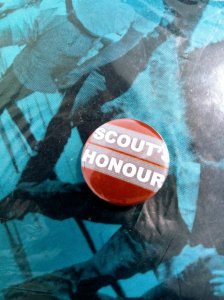Sally go round the moon!

Did you know that, according to Swansea schoolchildren, ‘Sally’ was going round the moon (and the sun, and the stars) back in 1952, years before Buzz and Neil set foot on its surface? With the anniversary of the first moon landing upon us we’re catching a passing sputnik to explore some lunar lore. And through children’s contributions stored in the Archive of Iona and Peter Opie at the Bodleian Libraries, Oxford, we’re learning that the moon loomed large over the playground in the 1950s.
Students at Glanmor Secondary School for Girls in Swansea who submitted the words of their game to the Opies weren’t alone in singing about a mysterious Sally making visits to the moon. A pupil at Sale County Grammar School for Boys c.1951-1953 reported a similar rhyme which ran:
Sally go round the sun
Sally go round the moon
Sally go round the chimney tops
On a Sunday afternoon.
(MS Opie 1 fol. 153r).
The rhyme goes back to at least the 1880s and is known in many parts of the English-speaking world. The writer H. E. Bates heard it used by girls for swinging under lamp-posts in the 1910s.
Lunar language also made its way into the popular pastime of skipping. In response to questionnaire queries from the Opies about special skipping terminology, one child from Dovenby School near Cockermouth in around 1952 replied with a skipping game called ‘Over the moon and under the stars’ (MS. Opie 9 fol. 210r) in which players had to run through the turning rope. The game was known as ‘’Under the moony and over the girdle’ in parts of Scotland, and in some cases was turned into a rhyme:
Under the moon and over the stars
How many miles is here to Mars?
Five, ten….
The moon also had meaning that went beyond games, however, and we have been coming across examples of well-known superstitions relating to the moon during our cataloguing work. Looking at a full moon through a window was thought to bring bad luck, while a ‘circle of yellowish light’ around the moon signalled bad weather brewing. Yet the moon could also be a way to harness good luck, by turning over the silver coins in your pocket on seeing the new moon.
In 1969, the year of the moon landing, the Opies published their book on Children’s Games in Street and Playground. In it, they wrote about pretending games, in which children ‘re-present, as if they were newsreels, the more spectacular national events’. What impact did the ‘giant leap for mankind’ and the Space Race have on children’s games of the time? If your own games included the moon, stars, aliens or visits to distant galaxies, why not let us know?























